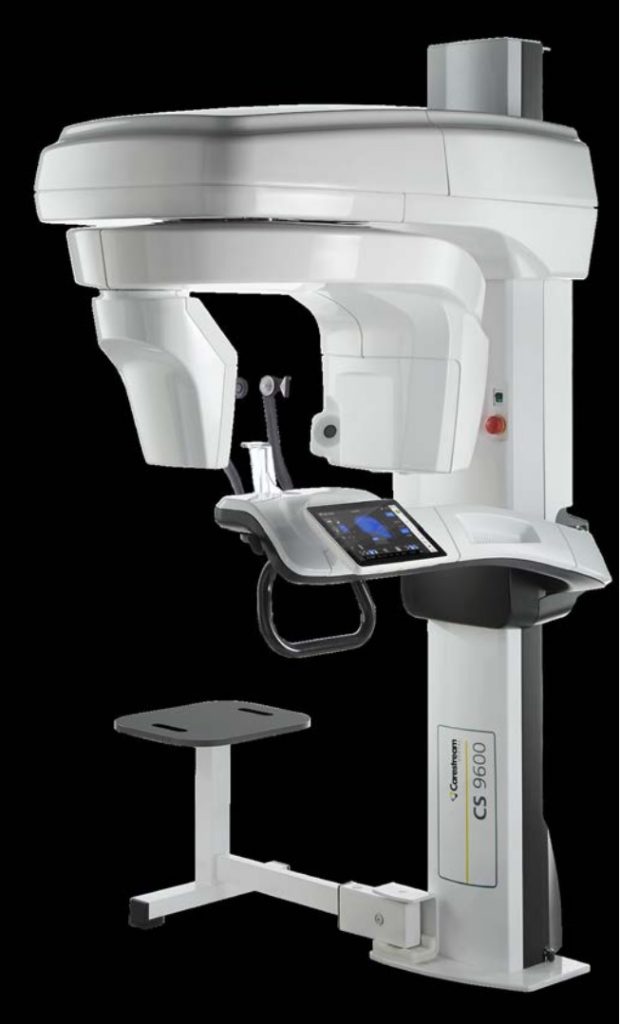3D Dental Cone Beam CT – CBCT
Dental cone beam computed tomography (CBCT) is a special type of x-ray equipment that produces three-dimensional (3-D) images of your teeth, soft tissues, nerve pathways, and bone in a single scan.

The Benefits of Dental CBCT Scan:
- Advanced treatment planning- Your dental team can plan how they can treat your unique dental needs.
- Improved diagnostic ability- Your dentist can easily see your soft tissue and bones from a variety of angles and views of your mouth for a better diagnosis.
- Better patient education- You can look at your 3D images and see what’s going on in your own body. As a result, you, therefore, have a better understanding of your condition.
- A full mouth scan typically takes about 20 seconds to acquire the scan. It takes about seven minutes for the computer to reconstruct the one gig of images the scan takes.
- Small machine size- A CBCT machine is smaller than the X-ray machines that hospitals use. A CBCT machine is 7 feet tall and weighs 300 Kg.
- 3D research tool-Dental cone beam CT scan technology is used for research purposes by dentists and by educational institutions.
- Precise reconstructive and cosmetic dentistry planning- CBCT provides the ability to see images of your soft tissues and bones simultaneously.
- Small doses of radiation as compared to the traditional CT Scan machine.
CBCT Uses:
- Dental cone beam CT is commonly used for the treatment planning of
- Surgical planning for impacted
- Diagnosing temporomandibular joint disorder(TMJ).
- Accurate placement of dental implants.
- Evaluation of the jaw, sinuses, nerve canals, and nasal cavity.
- Detecting, measuring, and treating jaw tumors.
- Determining bone structure and tooth orientation.
- Locating the origin of pain or pathology.
- Cephalometric
- Reconstructive surgery.
Patient Preparation for CBCT:
- A CBCT examination requires no special preparation.
There are several items that you need to remove before your exam, including
- Jewelry, including earrings
- Dentures or other removable dental appliances
- Hairpins
- Eyeglasses
- Hearing Aids
Women should always inform the technician if there is any possibility that they are pregnant.
How is the procedure performed?
You will be asked to sit in the exam chair or lie down on the exam table, depending on the type of cone beam CT scanner being used. Your dentist or oral surgeon will position you so that the area of interest is centered in the beam. You will be asked to remain very still while the x-ray source and detector revolve around you for a 360-degree rotation or less. This typically can take between 20 to 40 seconds for a complete volume, also called a full mouth x-ray, in which the entire mouth and dental structures are imaged, and less than 10 seconds for a regional scan that focuses on a specific area of the maxilla or mandible.
What will I experience during and after the procedure?
You will not experience any pain during a cone beam CT exam, and you will be able to return to your normal activities once the exam is complete.

